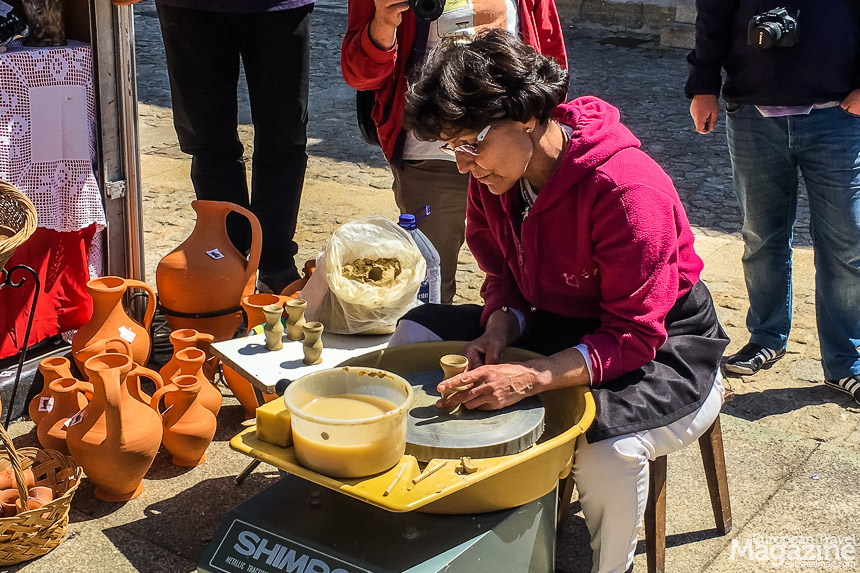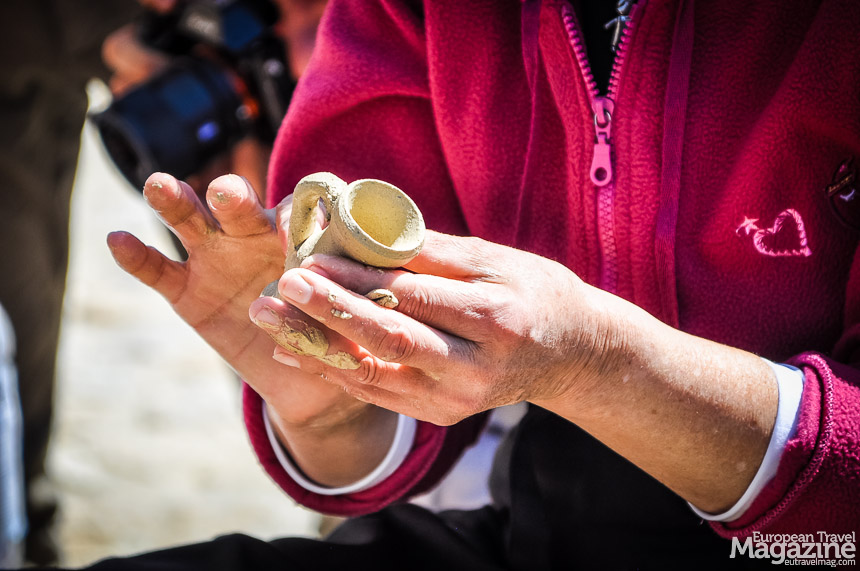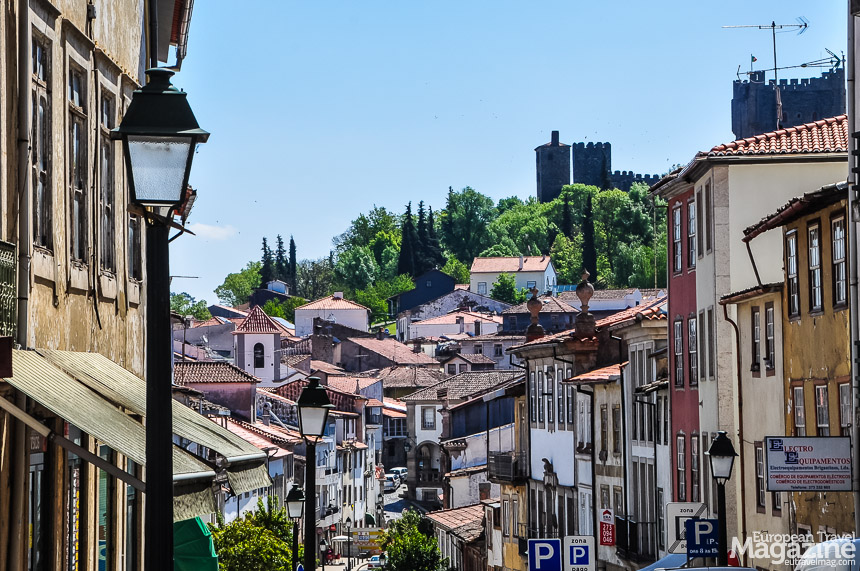When you start venturing outside the normal tourist places, you stop being a tourist and start being a traveler, an explorer, a witness to the culture and traditions of a certain territory. In the north-eastern corner of Portugal, the region of Bragança was previously difficult to reach, but a new motorway has opened up this interesting region to tourists and travellers alike.
The former isolation of the region, now only 2 hours’ drive from Porto, has retained its unique heritage, and the gastronomy, craftsmanship and traditions make this Trás-os-Montes area – literally “behind the mountains” – the perfect place to tap into authentic Portugal.
The last of her kind
Julieta Alves sits crouched over the rotating disc and caresses the grey clay. With a firm hand she sculpts this lump of clay to a perfect miniature pitcher, a cantarinha, that is rooted deep in the traditions of the region. When the little amphora has dried a bit, she etches a simple and elegant decoration on the pitcher; a leaf, a flower, the word Bragança, so tourists will know where they bought this traditional gift.
Julieta is the last of her kind in Pinela. This little village 30 kilometres south of Bragança was formerly famed for its many potters and ceramic artisans, but industrialisation has rendered their craft unnecessary and now only Julieta works the clay, like so many generations before her. She hasn’t found an apprentice, someone to take over the business, continue the tradition and keep the heritage alive. Like everywhere else in world, the youth is interested in other things and would rather have a steady pay in an office than the economic uncertainty and hassle of self-employment.
But as long as Julieta works the clay on her turntable, hope remains.
Strong hands and a proud disposition
As I walk among the stalls of the the Artisan’s market in the annual Feira das Cantarinhas in Bragança, it’s evident that many artisans share her fate. With strong hands, grey hair and a proud disposition, they market their workmanship as well as their goods. The lovely lady opposite the stall of Julieta spins flax with her hands into threads of yarn which she weaves into linen blankets and tablecloths. Another elderly lady adroitly bends reeds into baskets, commanding the twigs with strong and agile fingers.
There are not many artisans left in Europe, and they are a dying breed. To see so many craftsmen here in Bragança is a testament to the fact, that tradition is very much alive in this far corner of Portugal and is a wonderful opportunity for any curious traveller to buy some authentic, Portuguese souvenirs.
Cantarinhas
The origin of the miniature jugs, the cantarinhas of Bragança, dates back to medieval times, when a spring fair, the Feira das Cantarinhas, was held in the beginning of May, selling the first vegetables and seeds for planting. It also marked the beginning of summer; endless hot days where you needed to keep your water cool and clean. Without a refrigerator, mind you. Clay jugs are perfect for the task, keeping the liquid cool because the porous clay acts as an evaporative cooler, and so these were also sold at the market. A miniature version of the clay jugs; the cantarinhas, became the emblem of the market. Right up to this day.
These small pitchers, enameled or unglazed, were traditionally offered by boys to single girls as a token of courtship. Those girls who received more cantarinhas would be the most popular. Nowadays they are given to loved ones as a token of affection and friendship. They can be bought in any shape or colour at bargain prices. But the most authentic ones are those, that Julieta Alves has sculpted with her own two hands.
Intangible National Heritage?
So tied to the regional heritage is the cantarinha, that Hernani Dias, president of the Municipal Chamber of Bragança, wants it recognized as an Intangible National Heritage. While you nowadays can by your cantarinha for that special someone all year round in Bragança, the best time to do it is at the Feira das Cantarinhas in the first weekend of May, where the town comes alive and you can indulge in homemade sausages, jams, sweets, liquors, cookies and cakes.
Discover Bragança amidst a green landscape with the snow-clad Sierra de Montesinho as a backdrop and the medieval fortress as point of orientation and discover an authentic Portugal in Trás-os-Montes – behind the mountains.
Our trip to Bragança was made possible at the invitation of the Association of Commercial, Industrial and Services of Bragança. Through their project + Bragança they want to show the beauty and heritage of the region to curious travellers and conscious tourists.
We came to the region of Bragança, in the northeastern part of Portugal, in search of authenticity. We found it in the local villages, in the craftsmanship of the artisans. And we found it in the gastronomy.
Learn more
- Bragança Official Tourist Office website (in Portuguese)
- Bragança on Visit Portugal official website
- Bragança on Wikipedia

































